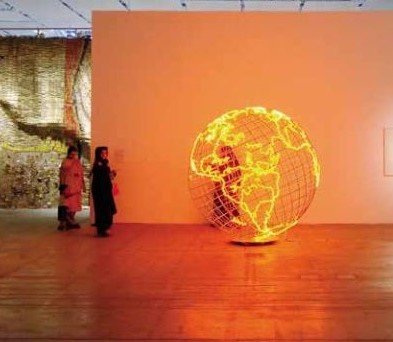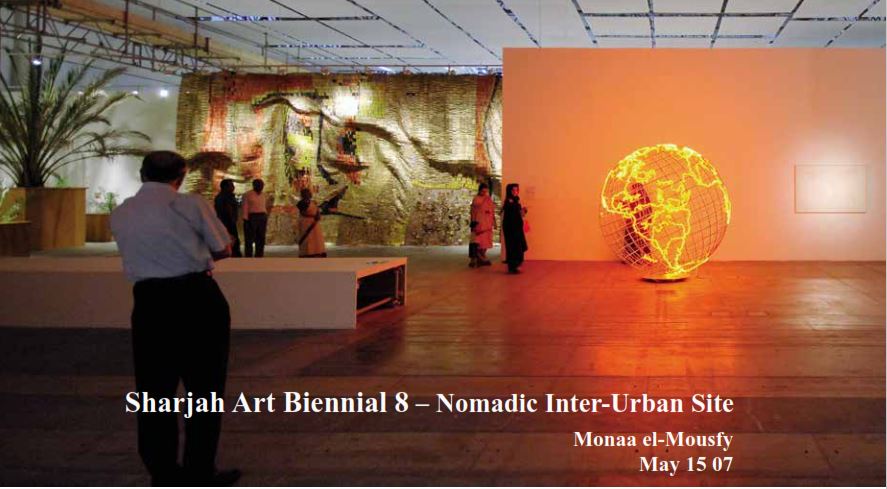
Published in 2A Magazine Issue #5 – Spring 2007
Nomadic contemporary artists
For Deleuze and Guattari, the nomad is the “outsider.” Nomadic thought is “outside” thought. Today, contemporary installation artists might be seen as “outsiders”2. Globe trotters, and world connoisseurs, they move around the earth from country to country, and from Biennial to Biennial, engaging with different cultures and geographic locations. Often informed by direct experience and with little convention or cultural baggage, their conceptually-based art installations are rigorously conceived in a fusion of complex sociological and political issues. Negotiating between cultures and locations, the artists are engaged in critical debates at the convergence of art and social science, and where art, meets science and technology. Many operate in spaces between fields, describing refreshing relationships that insiders can fail to see.
Installation artists travel from one Biennial to another. These short encounters in various locations across the planet form a pattern of living. Throughout the year they come across other artistic joumeys that nourish their own. Biennials become like brief sojourns in their artistic journeys.

SB8 encouraged a heterogeneous group of artists to come to the UAE to investigate an ambitious theme, “ecology and the politics of change”. They were asked to question the relationship between the human and nature/ environment. Rather than answers, artists raised questions which could not be easily summarized or contained. Their works presented diverse readings and engagements which return emphatically to the UAE as location. The fluidity of the artists’ approaches to the materialization of their ideas amazed me.
SB8-negotiable inter-urban site:
Fluid morphology and movement, flexible order and recyclable construction system
In response to the artists’ works, the SBS exhibition design used theoretical devices of ephemerality”:practices of movement and collaboration derived from “nomadic thought” in architecture. “Ecology”, the Biennial’s theme, emerged as the theory of a system of cohabitation and negotiation. Within that scenario, in the projected exhibition space of the expo venue, artists participated in the drawing of their own territories and in the negotiation of their relationships with neighboring art installations. The SB8 exhibition designer’s primary role became that of facilitator who mediates between artists and curators. The concept of “inter-urban site”3, as an elaboration of the ideas of participatory urbanism, self-organization, distribution and decentralization, was adapted to the Biennial context and to its interior exhibition setting.
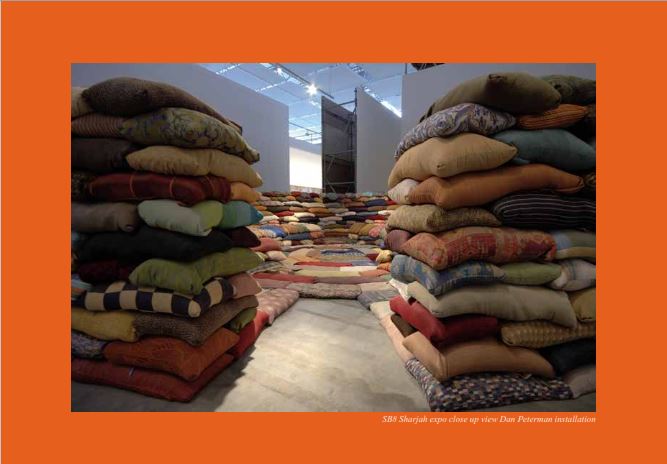
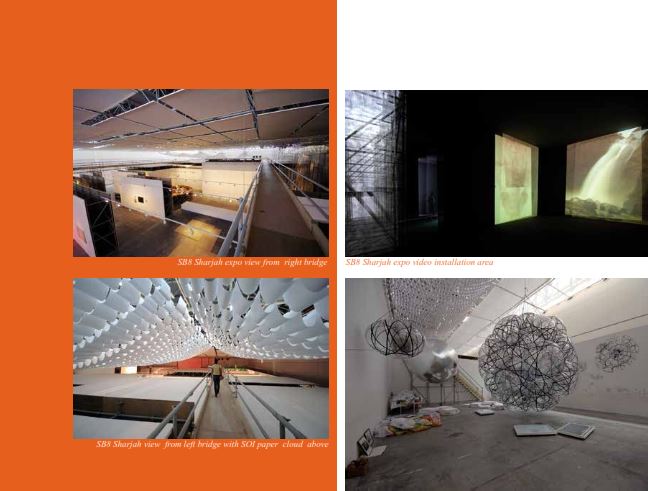
Spatial strategies of non-hierarchical and flexible order materialized the concept of inter-urban space. A set of free-standing vertical architectural elements were organized along with five mega strips to create spaces that could be easily adapted and transformed. This openness extended to their scale and lighting intensity which were adjustable, resulting in a fluid morphology shaped through artistic participation and negotiation. A flexible scaffold construction further reinforced the flexibility of the design, while referring to the surrounding urban context of the UAE, as febrile mega construction site. The scaffolding was rented from a local construction materials company and put to an unconventional use. This structure lent itself to the ephemeral quality of that fleeting event, while allowing for recycling. The set of free-standing architectural elements (9m long, 1.2m wide, and 4.5 m high) were covered on two sides by sandwiched plywood-gypsum panels clamped onto the scaffolding structure to be easily disassembled for reuse at other events. Depending on the viewer’s angle of vision, frontal, side-on or oblique, the exhibition frame and its vertical elements are viewed as smooth white spaces, fragments of rough construction sites, or a combination of both. The scaffolding is partially visible through the 1.2m space between the free standing separators.
The exhibition’s spatial strategy takes shape in its performance. Visitors establish their own routin: weaving freely through the exhibition spaces they perceive the fluid morphology of the design and discover at every turn a new layering of installations. Wandering through the exhibition space, a casual attention alternates with focused viewing, as distanced perusal is gradually transformed into close-up viewing – or even in full immersion within a specific installation space. Metallic bridges, which offer wide-angle and close-up plunging views, hover five meters above ground level in a perpendicular plane to the free-standing elements. The open morphology of the tension, in a questioning relationship with what surrounds them.
A translucent stretched fabric plane placed nine meters above the ground and a meter below the building space forms a giant tent. This form and the metallic scaffolding create the physical framework for the event. The SBS traveling art installations are hosted in a fleeting “interurban site”, located in this archetypal nomadic land. For these nomadic artists it is yet another pause in their continuing journey of observation, questioning, artistic narration and dialogue, around the pressing concerns of our contemporary world
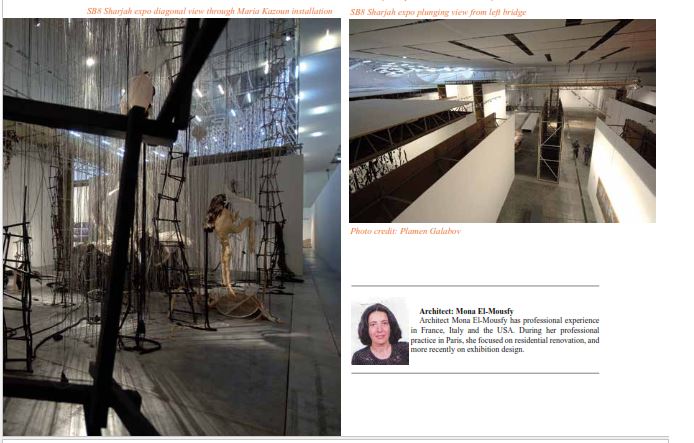
Notes 1. The concept of heterotopia was the subject of a lecture given by Michel Foucault in 1967. Published in 1984 as ‘Des Espaces Autres in the French Journal Architectures/Mouvement Continuite no. 5 Paris, 1984, the text has been translated into English with the title Of Other Spaces. Diacritics 16, no. 1. Maryland, John Hopkins University Press, 1986 2. Delence, Gilles, and Felix Guattari, A Thousand Plateaux: Capitalism and Schicophrenia. Trans. Brian Massumi. Minneapolis: University of Minnesota Press, 1987 3. Discussions with Samia Rab helped naming the concept of interurban ism”. I had already started exploring the concept of interior urbanism in the exhibition design of Sharjah Biennial 7, 2005.

